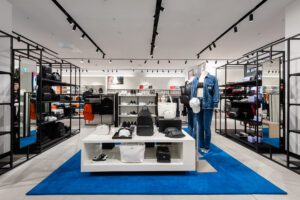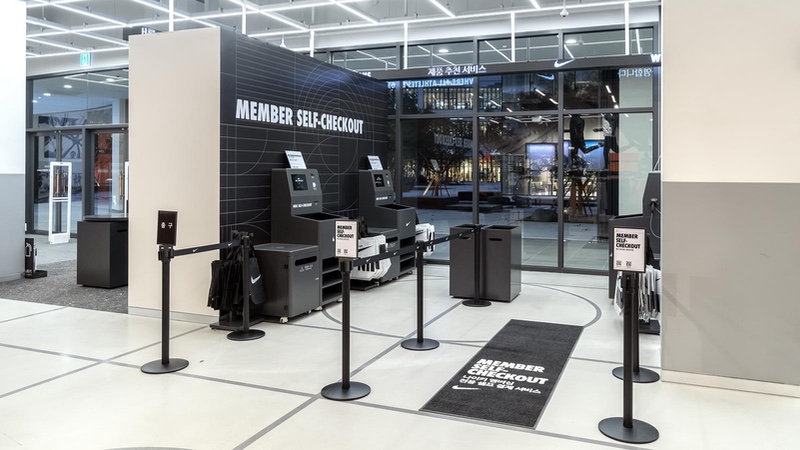From off-price origins to flagship success: the evolution of outlet retail
As featured in Drapers
Dan Mason, managing director of outlet centre operator Realm, discusses how the market has evolved since Clarks Village, one of the UK’s first outlets, opened in 1993.
In 1993, Clarks Village, a trailblazer of the UK outlet market, opened its doors. Over the course of the last three decades, outlet retail has undergone a remarkable transformation, shaking off any past perceptions of being full of racks and rails of last season’s stock in jumbled sizing. Today outlets are a dynamic and vital link in a retailer’s omnichannel strategy, and a legitimate and highly valued sales channel for both consumers and retailers alike.
The overall premiumisation of outlets means they are now fully serviced, sophisticated retail destinations, in fact the in-store experience has evolved so significantly as to be unrecognisable even to a decade ago.
We’re seeing a far more elevated approach to visual merchandising, and certainly a much calmer point of sale experience with brands investing in digital, and add-ons – including home delivery, in-store alterations and gelato kiosks.

Indeed, many fashion brands are investing in creating a “flagship experience” in their larger outlet stores. With a heightened focus on customer experience, outlets are also increasing their food and beverage offerings to boost dwell time.
With more focus on enhanced in-store aesthetics, upscale brands are able to capitalise on the allure of luxury while still maintaining affordability in a carefully controlled outlet setting. It is a powerful strategy as the tangible difference between outlet and full-price stores, particularly for first-time shoppers, is now near non-existent.
This transformation of outlet retail has, to a significant extent, been made possible by the turnover lease model. The key is transparency, where both retailer and outlet centre operator find shared value in shared sales data to boost sales.
Leases are also increasingly taking into account the sales from click and collect and online sales fulfilment, ensuring that schemes are omnichannel friendly. Outlet retail can offer both brands and operators a level of flexibility not often found across more traditional channels. There has always been a certain amount of wriggle room to allow change and responsiveness. Lease lengths are shorter, currently around five to ten years, and due to the higher levels of collaboration operators can be more proactive in right-sizing brands and creating opportunities for new entrants in categories that are growing in popularity, such as athleisure, footwear and premium lifestyle.

Today’s outlet market is particularly well suited to sports, premium lifestyle fashion and athleisure. We are seeing brands that are well established expand and diversify the offer within their outlet portfolios in the last two years. Tommy Hilfiger has expanded to include footwear and childrenswear, Levi’s introduced repair stations at their latest generation of outlet stores, [including Livingston Designer Outlet in Scotland] and sports and footwear brands including Nike are also installing self-checkouts to suit the different shopping styles of consumers.
Global fashion houses are increasing the footprint of their outlet centres which allows the businesses to introduce new ranges and ultimately acquire new customers. Radley London, which recently opened at Realm’s Lakeside Village in Doncaster, operates an impressive 14 outlet stores compared with just two full-price stores, both located in London.
The evolution of outlet schemes means there is a big opportunity for smaller, independent brands to break though. Deals and pop-ups with emerging brands help enhance the all-round experience, while keeping centres rooted in their local communities.
Brands with aspirations to expand in this channel should take special consideration of some key elements of the DNA of modern outlets, namely, customer experience, product and inventory, empowering local teams and delivering responsive marketing and promotions. Here are the key themes:
Brand and customer experience: Let’s not forget that outlet shoppers also shop in full price environments, so they know what great looks like – and “great” is no longer the five-year-old shop display fixtures that’s been shipped to an outlet, nor hand-written point of sale in red marker pen announcing slashed pricing. Instead, brands are creating unique leisure experiences in outlet stores to create new connections and spread joy.
Cross-generational appeal and responding quickly to trends: There is the event shopping trip which outlets have commanded for years – weddings, holidays and back to school have all handed opportunity on a plate to outlets and they have responded with broader product ranges to increase average spend.
Good people, training and support: The sector has been transformed by the injection of guest culture borrowed from the hospitality industry. With store managers and brand ambassadors now given more empowerment there is a level of professionalism and pride amongst store staff we have not seen before.
Social media: Social media is key to attract a more youthful demographic and outlets are demonstrating the value of TikTok and Instagram as efficient channels for boosting sales. Blogs and influencers are also key in heralding more reasons to visit outlets whether promoting conscious consumerism or being prudent with discretionary spending.
Set their own calendars: Whilst outlets have an “always on” approach to value, brands must carefully set their own calendars to preserve margins and avoid the expectation of “all year Black Friday”. The most successful stores are the ones with their own databases, their own VIP events, previews and a sense of membership.
Outlet centres at thirty are more resilient than ever. Brands that are focused on curating their outlet offer, and prioritising the customer experience, will undoubtedly continue to reap the rewards of this opportunity. Outlets are now a requirement of any successful omnichannel strategy.
